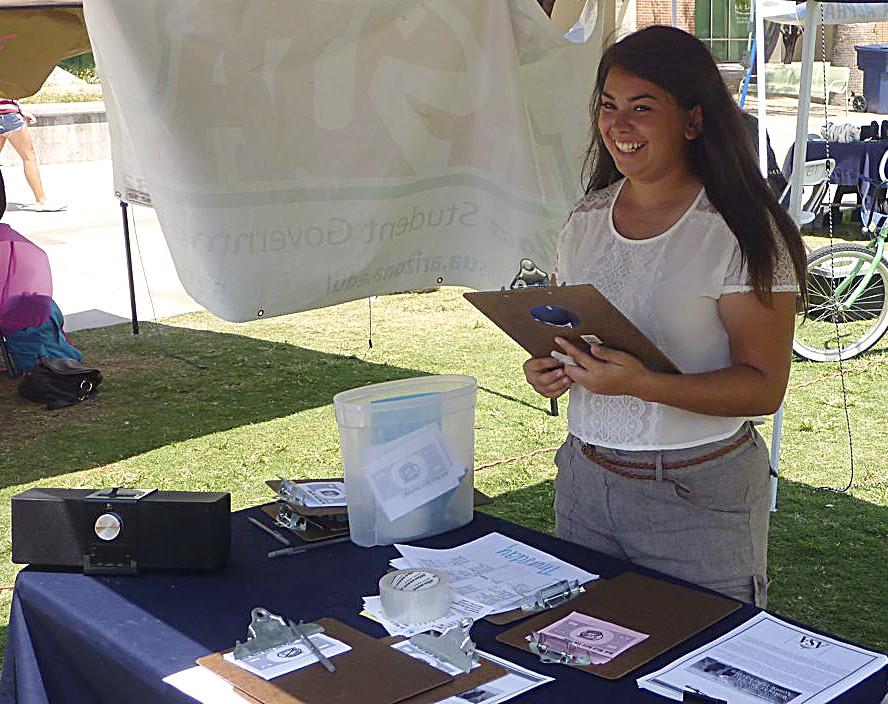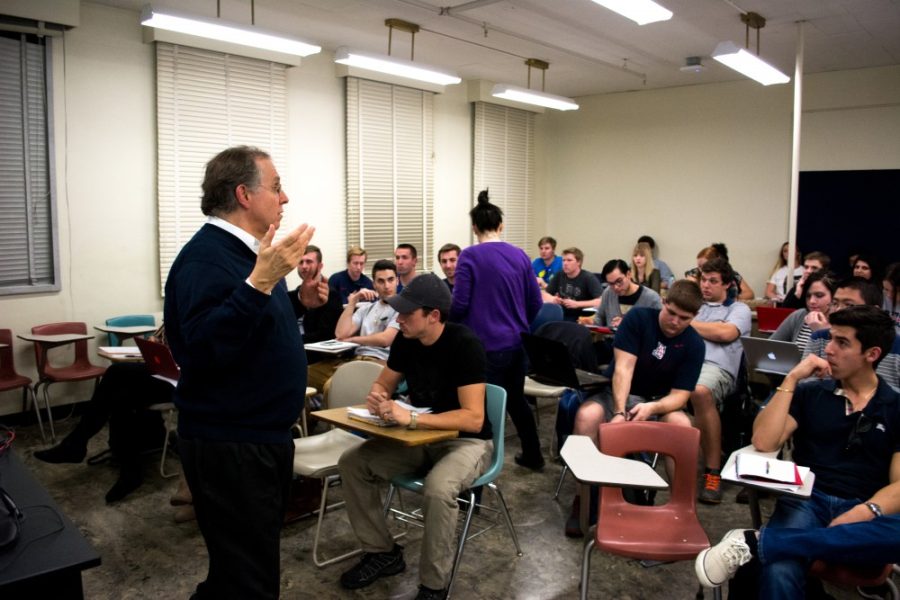Nicole Cousins, a freshman studying psychology and nutrition, said her $500 bill for textbooks surprised her, even though all nine of them were used or rented. And she said she would do it again next semester if it’s necessary to pass a class.
“I know they’re expensive, but if you don’t buy them, you could fail out of school,” Cousins said.
According to a survey of almost 2,000 undergraduates from 13 campuses by the Student Public Interest Research Groups, 70 percent of students did not buy at least one textbook due to the cost, and their grades may have suffered because of it. The national average for course materials in the 2010-2011 academic year was $1,137, according to the College Board’s website.
UA students will pay around $1,000 this year for books and supplies, according to the Office of Scholarships and Financial Aid’s website. It’s the publishers, not the UofA Bookstore, that are responsible for the expensive price tags, said Ariel Molk, a director with the Arizona Students’ Association and a senior studying English and political science. ASA is a student-run and funded lobbying group with chapters at Arizona State University, Northern Arizona University and the UA.
“We simply let students know of ways textbook companies take advantage of them,” Molk said. “And we give them other options.”
Msimbi Kikuyu, a pre-nursing sophomore, said she blames the recession for high textbook prices more than the publishers, who need to increase their prices to stay in business. Cousins agreed.
“It costs a lot to make money,” Cousins said.
McGraw-Hill Companies Inc., Focal Press and Peterson’s, publishers whose textbooks are in the bookstore, could not be reached by press time.
ASA stationed a booth on the UA Mall last week and spoke with more than 500 students over the course of three days. The textbook campaigns encouraged students to display their frustration in several ways, Molk said, such as writing down how much they spent on textbooks on sheets of fake money and sticking them in a giant wallet to highlight how much cash they were forced to spend. ASA aims to bring down textbook prices through awareness, lobbying, collecting student information and working with the bookstore.
Scott Lucas, an associate professor and interim director of the School of Middle Eastern and North African Studies, said he checks book prices before assigning them, looks for them in paperback and sends his orders in early every semester. He said he was surprised by the survey results.
“It’s horrible that students can’t even afford books,” Lucas said.
Kaichi Lin, a finance junior, said he paid $250 for one book. He said he would consider not buying his textbooks next semester and is not worried about failing a class. “I can share with my classmates,” he said.
A long-term ASA goal is introducing open source textbooks, which are free and published online. Molk said writers would mostly be compensated if students print out the material.
“It’s a good idea because it saves money, but I still prefer hard copies because it’s easier to work on paper than the Internet,” Cousins said.
Lucas said he could see many social science courses moving the bulk of their material to D2L, but thinks most classes will always have at least one textbook.
Based on surveys and focus groups, UA students will likely be more accepting of and familiar with digital content in three to five years, said Kurtis Durfey, marketing specialist for the bookstore.
The bookstore reduces textbook prices by renting, selling used, price matching with online competitors and working with document provider Fast Copy to bundle portions of several books into one collection.
“The bookstore doesn’t know how you’re going to use a textbook, we just know what the faculty wants you to order,” he said. “The more a student knows how they’re going to use a textbook, the more educated decisions they can make on how to spend their money.”
The bookstore will begin distributing brochures filled with textbook-buying tips in the spring as an Associated Students of the University of Arizona initiative, said James Allen, ASUA president and an ASA director. It’s not a major project, but hopefully it’ll help students save time and money, he added.
The bookstore should include coupons in the brochures and do more to communicate students’ frustration to publishers, Lin said.
Publishers pick the prices and teachers set the selection, putting the bookstore in a difficult situation, Durfey said.
“It’s an ongoing relationship,” Durfey added. “And the bookstore will continue to fight to bring down the cost of textbooks and make higher education more affordable.”









